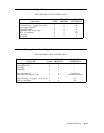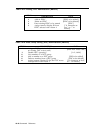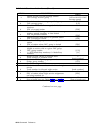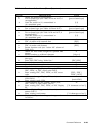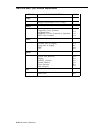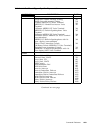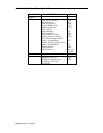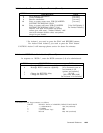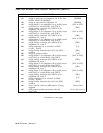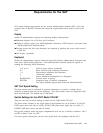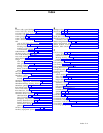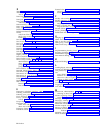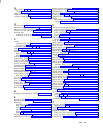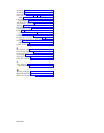
Index
A
Access code, speed dialing, 4-10
Access Toll Calls Allowed list, 4-7
Account Code Entry feature, 10-9
Account Codes, 4-5
Action groups, 2-7 – 2-8
Action number, 2-4
Action number, changing, 2-5
Add
code to Toll Calls Allowed list, 4-7
data terminal, 7-1, 8-1
Floating Personal Dial Code, 4-8
member to DGC group, 11-2
voice terminal, 7-1, 8-1
Administration commands, 2-4 – 2-9
All-Zone access code, 6-2
Area Code Routing Table, 12-6
Area code, search, 14-7
ASCII display, 17-1
Assign
area code, 12-9
DGC group access code, 11-1
pattern number, 12-2, 12-4, 12-8
routing pattern, 12-6
RS232 connector function, 15-2
trunk, 5-1
ATL port, 9-1
Attendant call parking, 9-7
Attendant console
class-of-service, 9-5
second, 9-2
Attendant-Console-Specific buttons, 10-10
Attendant equipment, administration, 9-1
Attendant Message Waiting button, 10-11
Attendant options, 3-5, 9-6
Auto-adjust baud rate, 8-7
AUTO ANS button, 10-10
Auto-Intercom, search, 14-2
Automatic Intercom feature, 10-8
Automatic Route Selection, 2-9, 3-5
administration, 12-1 – 12-9
Digit Translation Tables, 12-8
emergency telephone numbers, 12-1
Facility Restriction level, 7-5, 7-8
Facility Restriction level, data stations, 8-6
international dialing, 12-1
patterns, 12-2
Auxiliary equipment, administering, 6-1 – 6-4
Auxiliary equipment option, 3-4
B
Backspace key, 2-2, 17-1
Baud rate, 8-7, 8-8, 17-1
change, 15-2
mismatch of, 8-9
Baud Rate and Parity, 8-7
Board Locations, search, 14-4 – 14-5
translated, search, 14-6
Button assignment tables, 10-3 – 10-5
Button assignments, administration, 10-1 – 10-11
Button location, search, 14-7
Buttons, DXS console, 10-11
c
Call Coverage, 7-6, 7-9, 7-10
Group Receiver button, 10-8
individual feature, 10-9
Message Waiting feature, 10-7
options, 4-2 – 4-3
Call following, 4-3
Call parking, attendant, 9-7
Call Pickup, 7-6, 7-9
Call progress text messages, 8-9
Calling Restrictions, 7-4
Camped-on calls, 9-6
Central Office Code, 12-7
Changing
action number, 2-5
data value, 2-5
station dial code, 7-3, 8-3
target value, 2-6
Class of service
attendant console, 9-5
data terminals, 8-4
DID trunk, 5-3
multiline voice stations, 7-7
non-DID trunks, 5-3
options, 5-5, 7-4, 8-4
single-line voice stations, 7-4
Cold start, 3-1 – 3-3
Command format, 2-4
Command mode, 8-8
Commands, entering, 2-5
Connection indication message, 8-9
Conventions, 1-2
Correcting typing errors, 2-2
Index I-1



